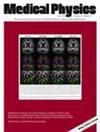Intraoperative 2D quantitative angiography (QA) for intracranial aneurysms (IAs) has accuracy challenges due to the variability of hand injections. Despite the success of singular value decomposition (SVD) algorithms in reducing biases in computed tomography perfusion (CTP), their application in 2D QA has not been extensively explored. This study seeks to bridge this gap by investigating the potential of SVD-based deconvolution methods in 2D QA, particularly in addressing the variability of injection durations.
Building on the identified limitations in QA, the study aims to adapt SVD-based deconvolution techniques from CTP to QA for IAs. This adaptation seeks to capitalize on the high temporal resolution of QA, despite its two-dimensional nature, to enhance the consistency and accuracy of hemodynamic parameter assessment. The goal is to develop a method that can reliably assess hemodynamic conditions in IAs, independent of injection variables, for improved neurovascular diagnostics.
The study included three internal carotid aneurysm (ICA) cases. Virtual angiograms were generated using computational fluid dynamics (CFD) for three physiologically relevant inlet velocities to simulate contrast media injection durations. Time-density curves (TDCs) were produced for both the inlet and aneurysm dome. Various SVD variants, including standard SVD (sSVD) with and without classical Tikhonov regularization, block-circulant SVD (bSVD), and oscillation index SVD (oSVD), were applied to virtual angiograms. The method was applied on virtual angiograms to recover the aneurysmal dome impulse response function (IRF) and extract flow related parameters such as Peak Height PHIRF, Area Under the Curve AUCIRF, and Mean transit time MTT. Next, correlations between QA parameters, injection duration, and inlet velocity were assessed for unconvolved and deconvolved data for all SVD methods. Additionally, we performed an in vitro study, to complement our in silico investigation. We generated a 2D DSA using a flow circuit design for a patient-specific internal carotid artery phantom. The DSA showcases factors like x-ray artifacts, noise, and patient motion. We evaluated QA parameters for the in vitro phantoms using different SVD variants and established correlations between QA parameters, injection duration, and velocity for unconvolved and deconvolved data.
The different SVD algorithm variants showed strong correlations between flow and deconvolution-adjusted QA parameters. Furthermore, we found that SVD can effectively reduce QA parameter variability across various injection durations, enhancing the potential of QA analysis parameters in neurovascular disease diagnosis and treatment.
Implementing SVD-based deconvolution techniques in QA analysis can enhance the precision and reliability of neurovascular diagnostics by effectively reducing the impact of injection duration on hemodynamic parameters.


